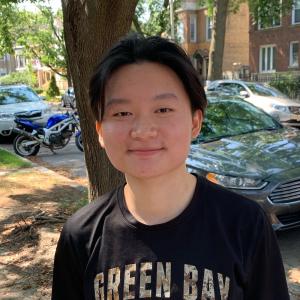I have the pleasure of taking a class this semester called “Language Pedagogy: The Theory & Practice of Teaching and Learning Languages.” The title of the course is pretty much self-explanatory. But, as I’m sure any teacher could attest, there is little use for classroom knowledge of teaching theories without practice. That is, even the best planned lessons are no match for a classroom full of second graders right after recess or a room full of half-asleep high school juniors. Luckily, Language Pedagogy boasts a practicum component as well as the traditional classroom-taught course.
My language teaching practicum is SITES, or Spanish in the Elementary Schools. Now in its fifth year, SITES offers Oberlin City Schools students in grades Kindergarten through 5 two short Spanish classes every week. All of the classes are team-taught by Oberlin College students, who volunteer their time in exchange for what I believe to be some of the best teaching practice around.
Of course, I have taught an ExCo twice, and way back when I tutored math to fellow high schoolers, but neither experience really comes close to standing in front of a classroom of 20 or so fourth graders, trying to teach them a second language without resorting to translating anything into English.
It’s terrifying.
Teaching grades K-12 is perhaps one of the most challenging professions I can think of, aside from those that involve superhuman amounts of physical labor. Teaching a class for college students may come naturally to me, but teaching to young children involves so many more factors. The advantage to teaching college students is that I think like them, largely because I am one of them myself. My primary disadvantage in the fourth grade arena, though it is fortunate in many ways, is that I no longer think like a fourth grader. In fact, I haven’t really been around too many fourth graders for a few years now.
I didn’t freeze up during my first Spanish class, though I came pretty close. My co-teacher was there to help me, of course. That’s when it really struck me, though, that I have so much more to learn. Learning how to teach well might just be something that takes me the rest of my life.
I am not alone in this endeavor, as you may have guessed. In fact, although there may not be an education major at Oberlin, there certainly are many students who are interested in learning how to teach. Last weekend, I got out of bed early on Saturday morning to attend an orientation session for all Oberlin College students who would be teaching or tutoring in the city schools this year. There were over 100 people in the room, not just from SITES but also from many tutoring and mentorship programs that are involved in all levels of public education in town.
The college’s support of education seems to be growing every year, especially since the start of the Graduate Teacher Education Program. Service-based teaching opportunities are plentiful for all students, and education-related courses for undergraduates, though few in number, are open to all those interested in the field. With time, and with enough demonstrated student interest, I hope that these opportunities will multiply.


